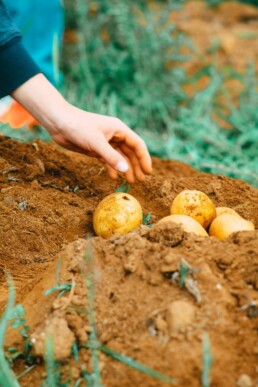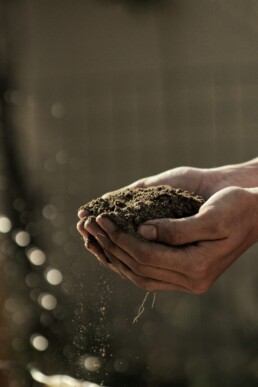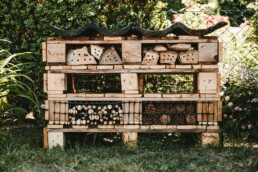The first Earth Day took place already in 1970. On the one hand, the aim is to strengthen the appreciation for nature and the environment, but also to encourage people to rethink their own consumer behavior. The mission today is to diversify, educate and activate the environmental movement worldwide and to drive positive action for our planet. Earth Day has been held every April 22 since 1970, so this year marks the 51st time.

Protect the climate with your own garden
Starting on a small scale and doing something for nature is possible with simple means in your own garden. More and more people are rediscovering the fun of gardening, which for many is often a welcome balance to the fast pace of everyday life. Many people relax in the garden not only on the lounger, but also when watering the plants or digging in the soil. Gardening is climate protection in practice. If you grow vegetables and herbs in your own raised bed or if you have fruit trees in your garden, you reduce truck transport and thus CO2 emissions. But there are other tips on how to make your garden sustainable.
Ideas for a sustainable garden
1. Sustainable fertilizer
How fertile a soil is depends on the nutrient cycle. Put simply, a plant gives back to the soil what it took as soon as it dies. If you pick herbs or pull carrots, this cycle is interrupted because the harvested plants do not give anything back to the soil. So the soil is less fertile until you add fertilizer to it. Many make the mistake of resorting to artificial fertilizers (also called nitrogen or mineral fertilizers). Although this supplies the plant immediately, it does not make the soil fertile, i.e. not more nutritious. If you use this type of fertilizer over a long period of time, you even weaken microorganisms that live in the soil. But it gets worse: artificial fertilizer evaporates nitrous oxide. This is a greenhouse gas that is much more harmful to the climate than carbon dioxide. Treating the soil with artificial fertilizer also prevents the accumulation of humus, which binds carbon dioxide. Humus is not only crucial for soil fertility, but also for climate protection.
Alternatively, horn shavings or rock flour, which are available in hardware stores, should be used. It is even easier to create your own compost in the garden. Organic kitchen waste can rot there, giving off a pleasant earthy smell. The end product is natural fertilizer that is healthy for the soil.


2. Make optimal use of the microclimate
The microclimate is the climate in the area of the air layers close to the ground; but it also exists around a small, clearly delimited area, for example.
In one part of the garden there may be shade, in the other corner the sun shines all day. Every microclimate should be optimally used in the garden. When planning a garden, it is important to know which plants are best to be planted in which location. Alleged disadvantages, such as direct sunlight, can be optimally used through a clever choice of plants. The microclimate can also be influenced by simple design measures such as hills, garden sheds, hedges or trees, which change temperatures, solar radiation or, for example, wind conditions.
For example, a garden pond influences the microclimate and at the same time still provides shelter and home for numerous small animals. Water evaporation cools the environment around the pond.
3. More tips and tricks
Garden tools
Work without electric gardening tools wherever possible. This saves energy and also avoids carbon dioxide emissions, for example, by not reaching for the gasoline-powered lawn mower.
Rainwater
Collect rainwater in a rain barrel to use for watering the garden. Rainwater is the best watering water for plants. Unlike water from the tap, it is lime-free, free of pollutants, and free of charge to boot.
Leaf vacuums
Do not use leaf vacuums, which not only make noise and are bad for your ears and those of your neighbors, but also suck up small animals in addition to leaves.
Solar energy
Use a solar pump for a fountain or garden lighting.
Native species
Make room for native species by, for example, leaving brushwood piles, having old and hollowed-out trees in the garden, or building insect houses.

To measure areas for your raised bed, a pond or the insect hotel, smart to plan is ideal. With your sustainable garden you are doing something good for the environment, with smart to plan you are doing something good for your mind and your time. smart to plan saves you time when taking measurements outdoors and is easy on your nerves thanks to its simple and precise handling. Would you like to find out more about our app? Then follow the link.
uncode-placeholder



